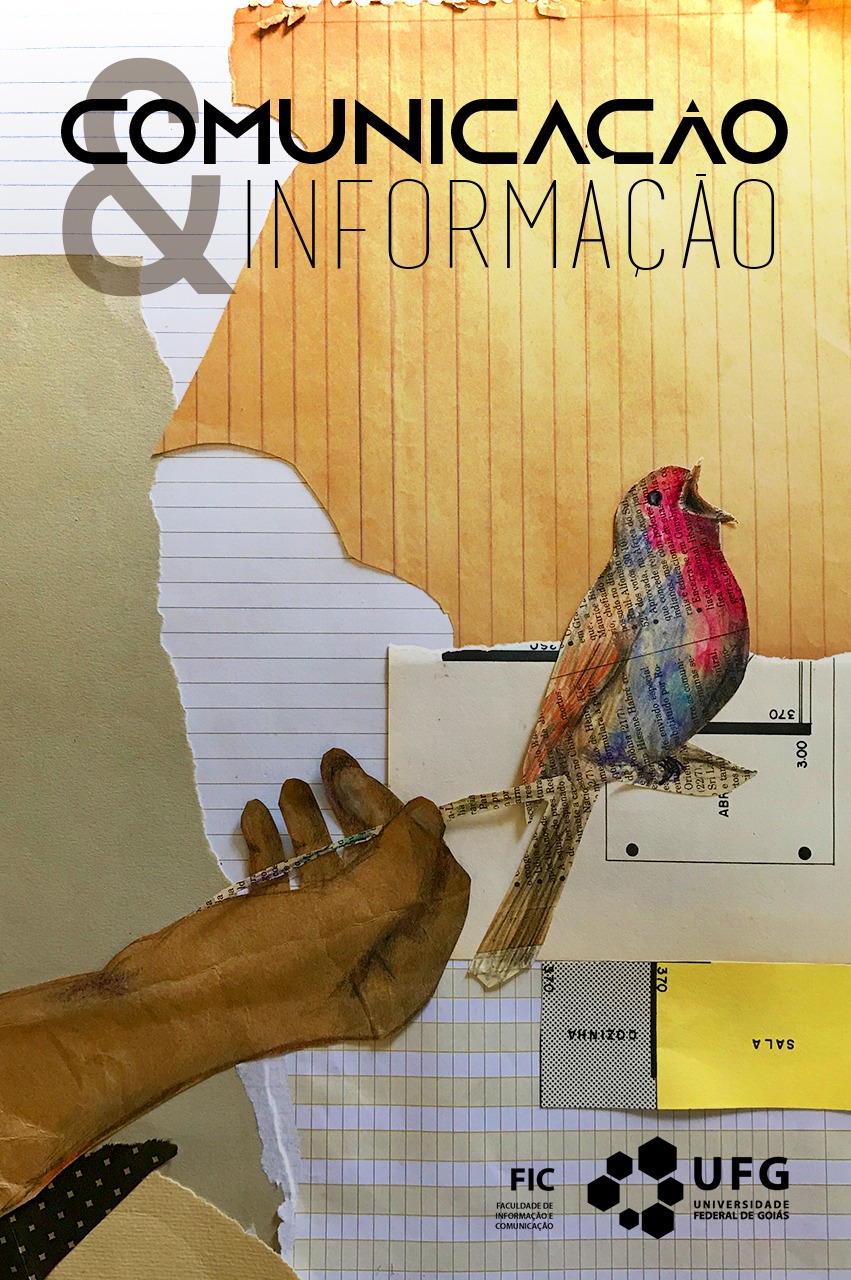The construction of satire in digital games
hybrid Images and disjunctive actions in the case of South Park - Stick of Truth
DOI:
https://doi.org/10.5216/ci.v23.66153Keywords:
Estudos de mídia, Análise audiovisual, Jogos digitais, Sátira, Tecnocultura contemporâneaAbstract
Discusses technical and aesthetic aspects of contemporary digital images, departing from the analysis of a particular computer game, South Park: Stick of Truth (2014). This game was chosen because its images entangle a series of very distinct techniques of graphic representation, and due to the ways that certain features of the language of digital games are explored in it, allowing for a critical approach to the images, forms and computational processes that emerge in contemporary audiovisual technoculture. The analysis includes procedures for dissecting images and the procedural rhetoric of games, based on methodological propositions developed by Kilpp (2009) and Bogost (2010), respectively. The analyses show how the game emphasizes specific elements that relate to the language of digital media and its contemporary dispersion, which allows us to reconsider concepts concerning the audiovisual hybridization, the softwarization of culture, and the design of human-computer interfaces as central aspects that underlie the current reconfigurations in today’s media ecology.
Downloads
References
AUMONT, Jacques. O olho interminável: cinema e pintura. São Paulo: Cosac & Naify, 2004.
BAUDELAIRE, Charles. Escritos sobre arte. São Paulo: Hedra, 2008.
BOGOST, Ian. Persuasive games: the expressive power of videogames. 2. ed. Cambridge, MA: MIT Press, 2010.
BOLTER, Jay; GROMALA, Diane. Windows and mirrors: interaction design, digital art and the myth of transparency. Cambridge: MIT Press, 2003.
BOLTER, Jay; GRUSIN, Richard. Remediation: understanding new media. Cambridge: MIT Press, 2000.
BORDWELL, David; STAIGER, Janet; THOMPSON, Kristin. The classical Hollywood cinema: film style and mode of production to 1960. New York: Routledge, 1988.
CASELLI, Stefano et al. Satire at play: a game studies approach to satire. In: INTERNATIONAL CONFERENCE ON THE FOUNDATIONS OF DIGITAL GAMES, 15., 2020, Msida. Proceedings […]. New York: Association for Computing Machinery, 2020. p. 1-7.
CHUN, Wendy. On software, or the persistence of visual knowledge. Cambridge: MIT Press, 2004.
CHUN, Wendy. Programmed visions: software and memory. Cambridge: MIT Press, 2013.
DEMARIA, Rusel; WILSON, John. High score! The illustrated history of electronic games. New York: McGraw Hill Osborne Media, 2002.
FISCHER, Gustavo Daudt. Cinema em Devir nos Games: por um olhar arqueogenealógico nas interfaces culturais. In: GERBASE, Carlos; GUTFRIEND, Cristiane Freitas (org.). Cinema em choque: diálogos e rupturas. Porto Alegre: Sulina, 2013a.
FISCHER, Gustavo Daudt. Tecnocultura: aproximações conceituais e pistas para pensar as audiovisualidades. In: KILPP, Suzana; FISCHER, Gustavo Daudt. (org.). Para entender as imagens: como ver o que nos olha? Porto Alegre: Entremeios, 2013b.
FUCHS, Mathias. Gamification as 21st Century ideology. Journal of Gaming & Virtual Worlds, London, v. 6, n. 2, p. 143-157, 2014.
FUCHS, Mathias. Subversive gamification. In: CERMAK-SASSENRATH, Daniel; TAN, Chek Tien; WALKER, Charles (org.). Playing the system: the playful subversion of technoculture. Singapore: Springer, 2018. p. 181-191.
GALLOWAY, Alexander. Gaming: essays on algorithmic culture. Minneapolis: University of Minnesota Press, 2006.
GIAPPONE, Krista Bonello Rutter. Self-reflexivity and humor in adventure games. Game Studies, Copenhagen, v. 15, n. 1, 2015.
KILPP, Suzana. Devires audiovisuais da televisão. In: SILVA, Alexandre Rocha; ROSSINI, Miriam de Souza (org.). Do audiovisual às audiovisualidades: convergência e dispersão nas mídias. Porto Alegre: Asterisco, 2009.
LUERSEN, Eduardo H. Potências do ruído nas interfaces gráficas dos countergames. RELACult - Revista Latino-Americana de Estudos em Cultura e Sociedade, [S. l.], v. 3, p. 96-108, 2017.
MANOVICH, Lev. Database as a genrecof new media. AI & Society, Brighton, v. 14, n. 2, p. 176-183, 2000.
MANOVICH, Lev. The language of new media. Cambridge: MIT Press, 2001.
MANOVICH, Lev. Software takes command: extending the language of new media. London: Bloomsbury, 2013.
MANOVICH, Lev. Understanding Hybrid Media. In: HERTZ, Betti-Sue (org.) Animated Painting. San Diego: San Diego Museum of Art, 2007.
SIHVONEN, Tanja. Players unleashed! Modding the sims and the culture of gaming. Amsterdam: Amsterdam University Press, 2011.
TRASFERETTI, Rodrigo; SANTOS, Roberto Elisio dos. Inovações tecnológicas e hibridismos no álbum-aplicativo Biophilia, de Björk. Comunicação & Informação, Goiânia, v.v20, n.v2, p. 113-131, 2017.
Downloads
Published
How to Cite
Issue
Section
License
Os autores dos trabalhos publicados na revista Comunicação e Informação retêm os direitos autorais sem restrições e concedem à revista o direito de primeira publicação, com o trabalho simultâneo licenciado sob a Licença Creative Commons Atribuição-NãoComercial que permite o compartilhamento do trabalho para fins não comerciais com reconhecimento da autoria e o privilégio de publicação primeiramente por esta revista. Caso o texto venha a ser publicado posteriormente em outro veículo, solicita-se aos autores informar que o mesmo foi originalmente publicado como artigo na revista Perspectiva, bem como citar as referências bibliográficas completas dessa publicação.
Os direitos autorais dos artigos pertencem aos autores e o conteúdo dos artigos assinados é de responsabilidade exclusiva dos autores.
A revista se reserva o direito de efetuar, nos originais, alterações de ordem normativa, ortográfica e gramatical, com o intuito de manter o padrão culto da língua, respeitando, porém, o estilo dos autores.
A revista também se reserva o direito de traduzir o artigo, no todo ou em parte, para o inglês ou para o português, dependendo do idioma em que o artigo tenha sido escrito originalmente.



